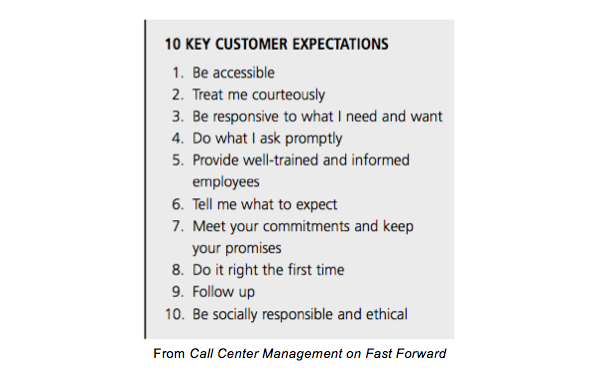How do you make the most of changing customer expectations and ensure that they are being built into your plans and direction? The following are some important rules of the road:
- First, ensure that your management team thoroughly understands the 10 basic customer expectations. Post them prominently. And make a habit of considering them when making decisions.

- Don’t guess at how you’re doing. Rather than create services based on what your team “believes” customers expect, get your information from the source. Listen through social channels, during interactions with agents, and through surveys that are frequent and detailed enough to provide input on how you’re doing for each of the 10 expectations.
- That said, remember Steve Jobs’ advice — customers don’t usually know what they want until you show it to them. If you want to differentiate through service, by definition, you’ll need to go beyond industry norms.
- Build cross-functional teams to ensure a common focus on serving customers. The contact center cannot single-handedly meet and exceed expectations — that takes the organization’s combined information, support, processes, products and services. It takes a team.
- Finally, ensure that evolving customer expectations form the context in which you develop your customer access strategy. They should drive everything from how you segment customers to what channels you make available, service level objectives, hours of operation, right through the list.
In short, knowing your customers and anticipating their expectations is essential. Truly understanding your customers is what can most separate you from competitors in an economy where products and services can otherwise so quickly be replicated.
Excerpt from Call Center Management on Fast Forward by Brad Cleveland.


0 Comments